Lead(II) tetrafluoroborate
Synonym(s):Lead boron fluoride;Lead(II) fluoroborate
- CAS NO.:13814-96-5
- Empirical Formula: BF4Pb+
- Molecular Weight: 294
- MDL number: MFCD00016270
- EINECS: 237-486-0
- SAFETY DATA SHEET (SDS)
- Update Date: 2025-01-27 09:38:02

What is Lead(II) tetrafluoroborate?
Description
Lead fluoborate is a nonflammable colorlessliquid or crystalline powder with a faint odor. Specific gravity (H2O:1) = 1.75 at 20℃; Molecular weight = 380.81.Hazard Identification (based on NFPA-704 M RatingSystem): Health 1, Flammability 0, Reactivity 0. Slightlysoluble in water (decomposes).
Chemical properties
Lead fluoborate is a nonflammable colorless liquid or crystalline powder. Faint odor.
The Uses of Lead(II) tetrafluoroborate
Used in tin-lead electroplatingLead(II) tetrafluoroborate is used as a catalyst involved in calixarene formation through hydrogen-bonded dimmers and in the preparation of linear polyesters. It is involved in the development and optimization of a bipolar lead-boron tetrafluoride accumulator. It is an electroplating solution for coating metal objects with lead and curing agent for epoxy resins. Further, it is used in printing lines, tin-lead alloy plating, lead soldering and also as a circuit board tin-lead alloy plating.
The Uses of Lead(II) tetrafluoroborate
Catalyst for mediation of calixarene formation via hydrogen-bonded dimers
Analyzed in terms of electochemical characterization of the effects of impurities and organic additives in lead electrowinning from fluoroborate electrolyte
Used in the development and optimization of a bipolar lead-boron tetrafluoride accumulator
General Description
Odorless colorless liquid. An aqueous solution. Sinks and mixes with water.
Reactivity Profile
Solution is acidic and will corrode most metals [USCG, 1999]. Toxic and irritating hydrogen fluoride gas may form in fire [USCG, 1999].
Health Hazard
Early symptoms of lead intoxication via inhalation or ingestion are most commonly gastrointestinal disorders, colic, constipation, etc.; weakness, which may go on to paralysis, chiefly of the extensor muscles of the wrists and less often of the ankles, is noticeable in the most serious cases. Ingestion of a large amount causes local irritation of the alimentary tract; pain, leg cramps, muscle weakness, paresthesias, depression, coma, and death may follow in 1 or 2 days. Contact with eyes or skin may cause burns and/or irritation.
Fire Hazard
Special Hazards of Combustion Products: Toxic and irritating hydrogen fluoride gas may form in fire.
Potential Exposure
This material is used in material finishing operations.
First aid
If this chemical gets into the eyes, remove anycontact lenses at once and irrigate immediately for at least15 min, occasionally lifting upper and lower lids. Seek medical attention immediately. If this chemical contacts theskin, remove contaminated clothing and wash immediatelywith soap and water. Seek medical attention immediately. Ifthis chemical has been inhaled, remove from exposure,begin rescue breathing (using universal precautions, including resuscitation mask) if breathing has stopped and CPR ifheart action has stopped. Transfer promptly to a medicalfacility. When this chemical has been swallowed, get medical attention. Give large quantities of water and inducevomiting. Do not make an unconscious person vomit.Antidotes and special procedures for lead: Persons withsignificant lead poisoning are sometimes treated with CaEDTA while hospitalized. This “chelating” drug causes arush of lead from the body organs into the blood and kidneys, and thus has its own hazards, and must be administered only by highly experienced medical personnel undercontrolled conditions and careful observation. Ca EDTA orsimilar drugs should never be used to prevent poisoningwhile exposure continues or without strict exposure control,as severe kidney damage can result.Note to physician: For severe poisoning BAL [British AntiLewisite, dimercaprol, dithiopropanol (C3H8OS2)] has beenused to treat toxic symptoms of certain heavy metals poisoning. In the case of lead poisoning it may have SOMEvalue. Although BAL is reported to have a large margin ofsafety, caution must be exercised, because toxic effects maybe caused by excessive dosage. Most can be prevented bypremedication with 1-ephedrine sulfate (CAS: 134-72-5).
Storage
Color Code—Blue: Health Hazard/Poison: Storein a secure poison location. Prior to working with thischemical you should be trained on its proper handling andstorage. Lead fluoborate must be stored to avoid contactwith oxidizers (such as perchlorates, peroxides, permanganates, chlorates, and nitrates) and chemically active metals(such as potassium, sodium, magnesium, and zinc), sinceviolent reactions occur. A regulated, marked area should beestablished where this chemical is handled, used, or storedin compliance with OSHA Standard 1910.1045. Lead is regulated by an OSHA Standard 1910.1025. All requirementsof the standard must be followed.
Shipping
UN2291 Lead compounds, soluble n.o.s., Hazard Class: 6.1; Labels: 6.1-Poisonous materials, Technical Name Required. UN2922 Corrosive liquids, toxic, n.o.s., Hazard class: 8; Labels: 8-Corrosive material, 6.1- Poisonous material
Incompatibilities
Aqueous solution is acidic. Incompatible with oxidizers, bases, active metals. Decomposes in water or alcohol. Attacks most metals; especially aluminum.
Properties of Lead(II) tetrafluoroborate
| Density | 1.62 g/mL at 20 °C |
| solubility | soluble in Water |
| form | Liquid |
| color | Clear colorless |
| Water Solubility | Soluble |
| Exposure limits | ACGIH: TWA 0.05 mg/m3; TWA 2.5 mg/m3 NIOSH: IDLH 100 mg/m3; IDLH 250 mg/m3; TWA 2.5 mg/m3; TWA 0.050 mg/m3 |
| CAS DataBase Reference | 13814-96-5(CAS DataBase Reference) |
| EPA Substance Registry System | Lead fluoroborate (13814-96-5) |
Safety information for Lead(II) tetrafluoroborate
| Signal word | Danger |
| Pictogram(s) |
 Exclamation Mark Irritant GHS07  Health Hazard GHS08  Environment GHS09 |
| GHS Hazard Statements |
H373:Specific target organ toxicity, repeated exposure H410:Hazardous to the aquatic environment, long-term hazard |
| Precautionary Statement Codes |
P202:Do not handle until all safety precautions have been read and understood. P260:Do not breathe dust/fume/gas/mist/vapours/spray. P273:Avoid release to the environment. P301+P312:IF SWALLOWED: call a POISON CENTER or doctor/physician IF you feel unwell. P308+P313:IF exposed or concerned: Get medical advice/attention. |
Computed Descriptors for Lead(II) tetrafluoroborate
Lead(II) tetrafluoroborate manufacturer
New Products
Indole Methyl Resin tert-butyl 9-methoxy-3-azaspiro[5.5]undecane-3-carboxylate Boc-His(Boc)-OH 2-CTC Resin 4-Chloro-7-tosy1-7Hpyrrolo[2,3-d]pyrimidine 5,7-Dibromo-1H-indole 2,5-dichloro-N-hydroxy-4,6-dimethylpyridine-3-carboximidamide 2,2-Dimethoxy-7-azaspiro[3.5]nonane hydrochloride 4-chloromethyl-5-methyl-1,3-dioxol-2-one (DMDO-Cl) R-2-BENZYLOXY PROPIONIC ACID 1,1’-CARBONYLDIIMIDAZOLE 1,1’-CARBONYLDI (1,2-4 TRIAZOLE) N-METHYL INDAZOLE-3-CARBOXYLIC ACID 4-((2-hydroxyethyl)thio)benzoic acid 1-(TERT-BUTOXYCARBONYL)-2-PYRROLIDINONE Methyl 6-methylnicotinate 3-Pyridineacrylic acid tert-Butyl carbazate TETRAHYDRO-2H-PYRAN-3-OL 2-((4-morpholinophenylamino) (methylthio) methylene) malononitrile 3-(4-morpholinophenylamino)-5-amino-1H-pyrazole-4-carbonitrile 2,4-dihydroxybenzaldehyde 1,3-Diethyl-1,3-Diphenylurea Methyl 2-methylquinoline-6-carboxylateRelated products of tetrahydrofuran

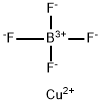

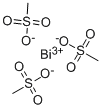
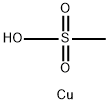


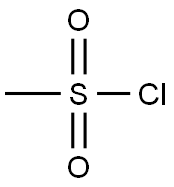
You may like
-
 Lead tetrafluoroborate 98%View Details
Lead tetrafluoroborate 98%View Details -
 Lead(II) tetrafluoroborate CAS 13814-96-5View Details
Lead(II) tetrafluoroborate CAS 13814-96-5View Details
13814-96-5 -
 Lead(II) tetrafluoroborate CAS 13814-96-5View Details
Lead(II) tetrafluoroborate CAS 13814-96-5View Details
13814-96-5 -
 Lead fluoborate CAS 13814-96-5View Details
Lead fluoborate CAS 13814-96-5View Details
13814-96-5 -
 LEAD (II) FLUOROBORATE SOLUTION CAS 13814-96-5View Details
LEAD (II) FLUOROBORATE SOLUTION CAS 13814-96-5View Details
13814-96-5 -
 Lead(II) tetrafluoroborate solution CAS 13814-96-5View Details
Lead(II) tetrafluoroborate solution CAS 13814-96-5View Details
13814-96-5 -
 Lead FluoborateView Details
Lead FluoborateView Details
13814-96-5 -
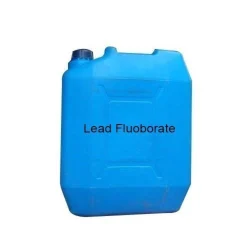 Liquid Lead FluoborateView Details
Liquid Lead FluoborateView Details
13814-96-5
